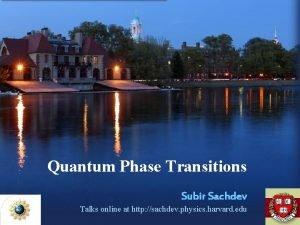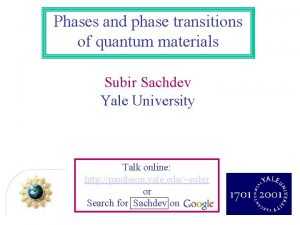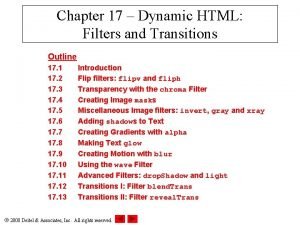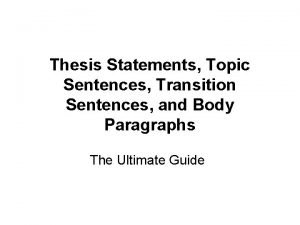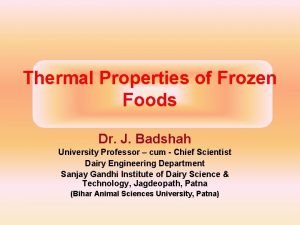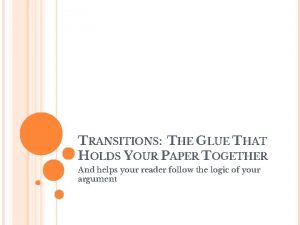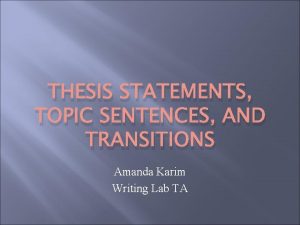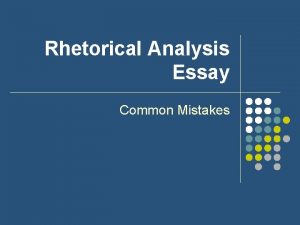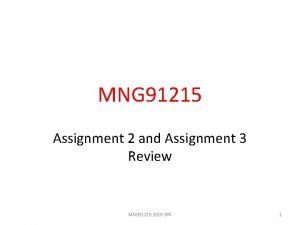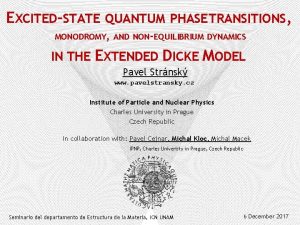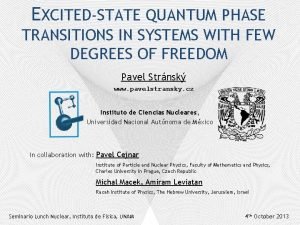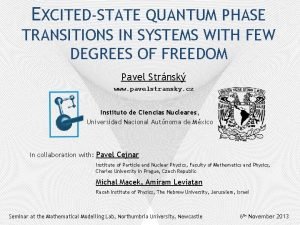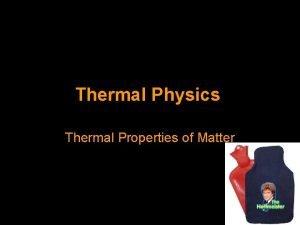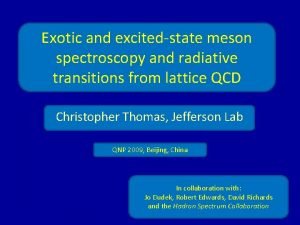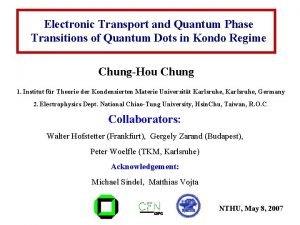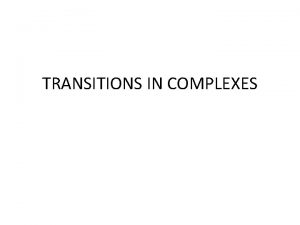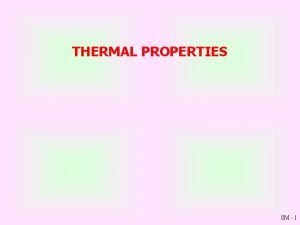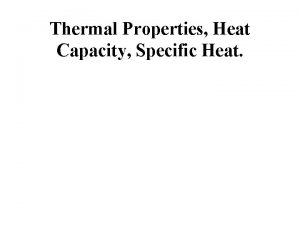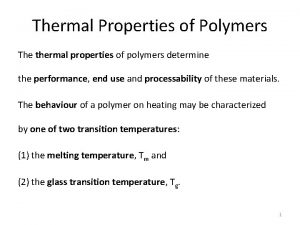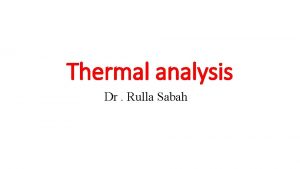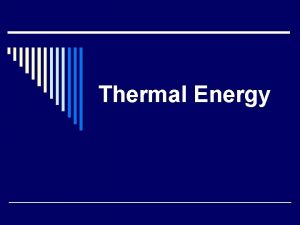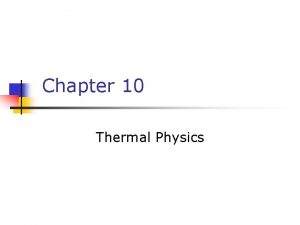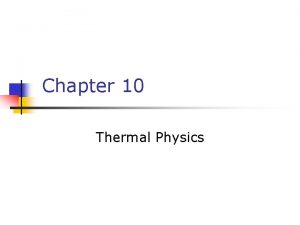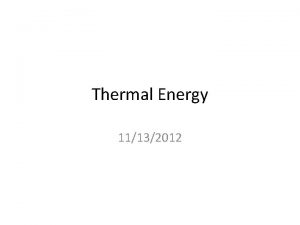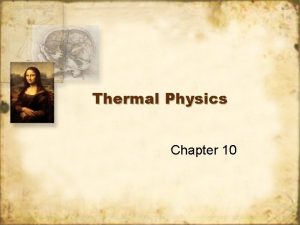EXCITEDSTATE QUANTUM PHASE TRANSITIONS CLASSIFICATION AND THERMAL PROPERTIES





































- Slides: 37

EXCITED-STATE QUANTUM PHASE TRANSITIONS: CLASSIFICATION AND THERMAL PROPERTIES Pavel Stránský www. pavelstransky. cz Institute of Particle and Nuclear Physics Charles University in Prague Czech Republic In collaboration with: Pavel Cejnar, Michal Kloc, Michal Macek IPNP, Charles Univeristy in Prague, Czech Republic NMP 17, East Lansing, Michigan, USA 7 March 2017

Outline • • • ESQPT: Definition and evidence in the literature ESQPT: Theory (level density, flow rate) ESQPT: numerical examples (Dicke model, CUSPs) ESQPT: Thermodynamical consequences Conclusions

Quantum phase transition (QPT) A nonanalytic change (in the infinite-size limit) of ground-state properties of a system by varying an external control parameter l at absolute zero temperature (only quantum fluctuations present) potential-wells evolutions in a quantum CUSP model (details later) E continuous(nth order) first-order l Examples: • • l ferromagnet-paramegnet transitions insulator-superfluid transitions superradiant phase transitions. . . S. Sachdev, Quantum Phase Transitions (2011) L. D. Carr, Understanding Quantum Phase Transitions (2011)

Excited-state quantum phase transition (ESQPT) Generalization of the QPTs for the excited spectra a) discontinuity in the smooth level density r critical borderlines E b) discontinuity in the average level flow rate f a) b) l ESQPT’s effect is best visible in averaged quantities characterizing bundles of energy levels in individual level themselves M. A. Caprio, P. Cejnar, F. Iachello, Ann. Phys. 323, 1106 (2008) P. Cejnar, P. Stránský, Phys. Rev. E 78, 031130 (2008)

Evidence of ESQPTs in the literature O(6)-U(5) transition in the Interacting Boson Model Geomet ric colle ctive mo. Graphene 2 -level fermionic pairing model d e l of atom Lipk i c nuclei in m (ESQPT experimentally observed) odel 2 -level pairing models s-boson condensate P. P érez -Fer nánd ez, A. R el Phys año, J. M. A. Caprio, P. Cejnar, F. . RIachello, ev. A 80 rias, J. Duk Annals of Physics 323, 1106 (2008), 032 s+d-bosons condensate elsk 1 1 sky, J. Wambach, P. CM. y. vons, Smekal, . Dukeland ejn. Miski-Oglu, B. Dietz, F. Iachello, J ar, P. St N. Pietralla, 1 A. (2 Richter, 009) J. , MJ. L. a i E r A ráns. Rev. r, (2013). Gar 3 c, í 033802 (2009) a n ký, PBhzy 88, j e C Phys. 104101. 8 a-Ra (2011). PRev. E J. ys. Phys. e , s. Iachello, M. A. Caprio, J. H. e. Skrabacz, . 0 Rev. AA 44, 075303 ernánd. F. mos F h 7 P z 8 , , r o é ñ P 3 a 1130 (20 , el P. R. A , s o 08 Gen. am ) R a í c P. Cejnar, M. Macek, JS. Heinze, J. Jolie, J. Dobeš, J. Phys. A: Math. 39, L 515 r a. E. G (2006)

ESQPT Theory

Manifestations of ESQPTs Hamiltonian energy surfaces E x E l l Critical borderlines correspond with the positions of local extremes in the constant-energy surfaces Interesting behaviour expected at energies of the Hamiltonian stationary points

a) Level density oscillatory component smooth component (Weyl formula) Numerical approximation (semiclassically given by the Gutzwiller trace formula; not relevant here in the infinite-size limit) volume function of the classical phase space I. Hoveijn, J. Math. Anal. Appl. 348, 530 (2008) M. Kastner, Rev. Mod. Phys. 80, 167 (2008)

Level density: Nondegenerate stationary point w Morse lemma energy surface Approximation of the Hamiltonian with a quadratic function in the vicinity of w E index r of the stationary point e w local volume integral y 2 x 1 y 1 local coordinates r=0 r>0 P. Stránský, P. Cejnar, Phys. Lett. A 380, 2637 (2016)

Nondegenerate stationary point: singularities f integer f half-integer (relevant for lattices and timedependent Hamiltonian systems) r even r odd [f-1]-th derivative logarithmic divergence inverse sqrt jump Ew E Each singularity of the level density at a nondegenerate stationary point is uniquely classified by the two numbers (f, r) P. Stránský, P. Cejnar, Phys. Lett. A 380, 2637 (2016)

Level density: Degenerate stationary point Special class of separable Hamiltonians (flat minimum): (analytic only for mk even integer) Example: We require discontinuity of the t-th derivative - satisfied when even in thermodynamic limit the level density can be discontinuous Higher flatness of the stationary point enhances its signatures in the spectrum (it shifts the singularity towards lower derivatives).

Level density: Degenerate stationary point Special class of separable Hamiltonians (flat minimum): (analytic only for mk even integer) Structural stability - an arbitrarily small perturbation converts any function into a Morse function: - discontinuity of the -th derivative Example 1: We require discontinuity of the t-th derivative flat minimum quadratic minimum even in thermodynamic limit - satisfied when the level density can be discontinuous M. Kastner, Rev. Mod. Phys. 80, 167 (2008) Higher flatness of the stationary point enhances its signatures in the spectrum (it shifts the singularity towards lower derivatives).

ESQPT Numerical examples

Example 1: Dicke model of superradiance - interaction of a single-mode bosonic field with a chain of two-level atoms d = 0: integrable (Tavis-Cummings) regime d = 1: nonintegrable (Dicke) regime R. H, Dicke, Phys. Rev. 93, 99 (1954) K. Hepp, E. Lieb, Ann. Phys. 76, 360 (1973) Michal Kloc (Thursday afternoon) Semiclassical Hamiltonian M. Kloc, P. Stránský, P. Cejnar, submitted to Ann. Phys.

Example 1: Dicke model of superradiance - interaction of a single-mode bosonic field with a chain of two-level atoms d = 0: integrable (Tavis-Cummings) regime d = 1: nonintegrable (Dicke) regime R. H, Dicke, Phys. Rev. 93, 99 (1954) K. Hepp, E. Lieb, Ann. Phys. 76, 360 (1973) f = 2 degrees of freedom normal phase QPT 2 nd order ESQPTs nonanalyticities appear in the first derivative of r dr/de superradiant phase M. Kloc, P. Stránský, P. Cejnar, submitted to Ann. Phys.

Example 1: Dicke model of superradiance - interaction of a single-mode bosonic field with a chain of two-level atoms d = 0: integrable (Tavis-Cummings) regime d = 1: nonintegrable (Dicke) regime R. H, Dicke, Phys. Rev. 93, 99 (1954) K. Hepp, E. Lieb, Ann. Phys. 76, 360 (1973) Nonintegrability – allows one to study connection between the ESQPTs and chaos regular chaotic M. Kloc, P. Stránský, P. Cejnar, submitted to Ann. Phys.

b) Level flow rate trajectories of individual levels – flow lines Continuity equation derivatives Using Hellmann-Feynman formula, the flow rate can be expressed as We expect the same nonanalyticity in the flow rate as in the level density P. Stránský, M. Macek, P. Cejnar, Ann. Phys. 345, 73 (2014) P. Stránský, P. Cejnar, Phys. Lett. A 380, 2637 (2016)

Example 2: CUSP and related systems 2 ESQPTs (if E E Level density P. Cejnar, P. Stránský, Phys. Rev. E 78, 031130 (2008) P. Stránský, M. Macek, P. Cejnar, Ann. Phys. 345, 73 (2014) ) (1, 1) (1, 0) x Flow rate approximately 0 positive (levels rise) l Singularly localized wave function at the top of the local maximum with Both minima accessible – the wave function is a mixture of states localized around and (1, 1) (1, 0) negative (levels fall) (1, 0) The wave function localized around the global minimum

Example 2: CUSP and related systems 2 ESQPTs (if E P. Cejnar, P. Stránský, Phys. Rev. E 78, 031130 (2008) P. Stránský, M. Macek, P. Cejnar, Ann. Phys. 345, 73 (2014) ) (1, 1) (1, 0) x Creagh-Whelan 2 D model E (2, 1) (2, 0) y P. Stránský, M. Macek, P. Cejnar, Ann. Phys. 345, 73 (2014) P. Stránský, M. Macek, A. Leviatan, P. Cejnar, Ann. Phys. 356, 52 (2015) x Triple CUSP model 3 • Separable combination of three CUSP systems P. Stránský, P. Cejnar, Phys. Lett. A 380, 2637 (2016)

Triple CUSP model Level density f=3 degrees of freedom Singularities expected in the 2 nd derivative of the level density and flow rate Due to the continuity equation singularities in f of the same type as in r (except for the sign) Flow rate 27 stationary points: 8 x 12 x 6 x 1 x (3, 0) (3, 1) (3, 2) (3, 3) minimum saddle 1 saddle 2 maximum ↑ ↑ ↓ ↓ jump log div

ESQPT Thermal properties

Infinite-size limit of systems with finite f . . . Assumption: Limits: Interacting Boson Model of atomic nuclei

Microcanonical thermodynamics - inverse temperature partition function - thermal distribution Tripple CUSP system - heat capacity - nonanalytic behavior again P. Cejnar, P. Stránský, Phys. Lett. A 381, 984 (2017)

Heat capacity • Microcanonical • Canonical separable system CUSP + (f-1) x HO (3 stationary points) f x CUSP (3 f stationary points) f=3 f=4 f=5 f=15 canonical microcanonical

Conclusions ESQPTs originate in stationary points of the Hamiltonian and manifest themselves as singularities in the smooth level density and in the average flow rate. Degenerate stationary points Higher flatness of the stationary point shifts the discontinuity towards lower derivatives Thermodynamics THANK YOU FOR ATTENTION


Hamiltonian in the standard form size parameter • Kinetic term quadratic in momenta • No mixing of coordinates and momenta • Analytic potential V • Confined system (discrete spectrum) Smooth level density, flow rate and thermodynamical consequences in systems with f=2 studied extensively in: P. Stránský, M. Macek, P. Cejnar, Annals of Physics 345, 73 (2014)

Complicated kinetic terms - algebraic models have often very complicated semiclassical Hamiltonians that nontrivially mix coordinates and momenta Dicke model Interacting Boson Model C. Emary, T. Brandes, Phys. Rev. E 67, 066203 (2003) P. Pérez-Fernández et al. , Phys. Rev. A 83, 033802 (2011) F. Iachello, A. Arima, The Interacting Boson Model (Cambridge University Press UK, 1987)

Level density in the models Creagh-Whelan model CUSP model E level density E B = 30, C=D=20 E 1 st derivative l 0 0. 5 -2. 5 l (1, 1) (1, 0) l l (2, 1) (2, 0)

Flow rate in the Creagh-Whelan system flow rate energy derivative of the flow rate (2, 1) The singularities of the flow rate are of the same type as for the level density (2, 0)

3. Finite-size effects P. Stránský, M. Macek, A. Leviatan, P. Cejnar, Annals of Physics 356, 57 (2015)

Separable system Level density given by a convolution Model Creagh-Whelan with B=C=0: Harmonic oscillator Ex rx(Ex)ry(Ey)

The level dynamics is a superposition of shifted 1 D CUSP-like critical triangles Imbalanced system • the time scale significantly differs in each degree of freedom • Rigidity D = 40 E (ratio of the mean level spacing in each direction) much bigger or smaller that one Smoothing s can be chosen in such a way that it is big enough to smooth the level density in one degree of freedom and keep the oscillatory part in the other l E finite-size effect l

Nonintegrable system – Partial separability Classical dynamics - Creagh-Whelan system E fraction of regularity B=0 C=30 D=10 rigidity similar with the separable case l

Nonintegrable system – Partial separability Classical dynamics E Poincaré sections fraction of regularity px px l x Partially smoothed level density E l corresponding patterns x

Nonintegrable system – Partial separability Classical dynamics E Poincaré sections fraction of regularity px px Level dynamics l x Partially smoothed level density E l corresponding patterns x

Nonintegrable system – Chaos E freg symmetric case B=0, C=39, D=1 level dynamics l E asymmetric case B=39, 20, D=20 l
 Subir sachdev quantum phase transitions
Subir sachdev quantum phase transitions Classical mechanics
Classical mechanics Quantum physics vs quantum mechanics
Quantum physics vs quantum mechanics Thermal energy section 3
Thermal energy section 3 Thermal transfer vs direct thermal printing
Thermal transfer vs direct thermal printing Quantum phase transition
Quantum phase transition Mechanical behavior of materials
Mechanical behavior of materials Mobile phase and stationary phase
Mobile phase and stationary phase Stationary phase
Stationary phase Hplc detector types
Hplc detector types Vertical blinds
Vertical blinds Difference between topic sentence and thesis statement
Difference between topic sentence and thesis statement What is the difference between unity and coherence
What is the difference between unity and coherence Ideal properties of dental materials
Ideal properties of dental materials Thermal properties of frozen foods
Thermal properties of frozen foods Normal phase vs reverse phase chromatography
Normal phase vs reverse phase chromatography Tswett pronunciation
Tswett pronunciation Normal phase vs reverse phase chromatography
Normal phase vs reverse phase chromatography Phase to phase voltage
Phase to phase voltage Phase to phase voltage
Phase to phase voltage Broad phase vs narrow phase
Broad phase vs narrow phase How to increase audio volume in windows movie maker
How to increase audio volume in windows movie maker What holds paper together
What holds paper together Transitions for thesis statements
Transitions for thesis statements Script writing elements
Script writing elements Process discriminants in software project management
Process discriminants in software project management Transitions for rhetorical analysis
Transitions for rhetorical analysis Melcon transitions
Melcon transitions Mel-con
Mel-con Effects of transitions in early years
Effects of transitions in early years Purpose of descriptive writing
Purpose of descriptive writing Whats a descriptive essay
Whats a descriptive essay Rabia transitions
Rabia transitions Logical transitions
Logical transitions William bridges transitions model
William bridges transitions model Argumentative essay structure
Argumentative essay structure How to imbed quotes in an essay
How to imbed quotes in an essay Transition words for sequence
Transition words for sequence
